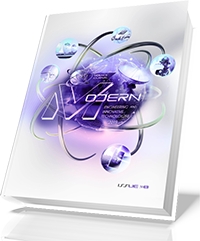TECHNOLOGY OF CONCRETE AND BUILDING MORTARS TECHNOLOGY USING SECONDARY MINERAL RESOURCES
DOI:
https://doi.org/10.30890/2567-5273.2024-31-00-051Keywords:
secondary mineral resources, ash-and-slag mixes, vibrovacuumizing, moulding, concreteAbstract
Tens of millions of tons of various secondary mineral resources have accumulated in landfills, dumps and storage facilities of the Dnieper region - ash-and-slag mixes of thermal power plants (TPPs), etc.). Theoretical and experimental studies showed thatReferences
Mariusz Holtzer, Rafał Dańko, Angelika Kmita, Dariusz Drożyński, Michał Kubecki, Mateusz Skrzyński, Agnieszka Roczniak (2020). Environmental Impact of the Reclaimed Sand Addition to Molding Sand with Furan and Phenol-Formaldehyde Resin-A Comparison // Materials, Vol. 13, P. 4395. https://www.mdpi.com/1996-1944/13/19/4395
Sang-Yeop Chung, Pawel Sikora, Dietmar Stephan, Mohamed Abd Elrahman (2020). The Effect of Lightweight Concrete Cores on the Thermal Performance of Vacuum Insulation Panels // Materials,. Vol. 13, P. 2632. https://www.mdpi.com/1996-1944/13/11/ 2632
Xiaohui Zhu. Properties of Alkali Activated Slag Concrete // Chemical Engineering TransactionsCET Journal, 2017. Vol. 62. P. 1009 – 1014. https://doaj.org/article/4d39fc854a7e44749abd 80068fa 052c2
Rimma K. Niyazbekova, Muratbek T. Userbaev, Gulnara A. Kokayeva, Lazzat S. Shansharova, Marat D. Konkanov, Saule A. Abdulina. Ash Deposits CHP – as an Additional Source of Raw Material for Construction Production // Chemical Engineering TransactionsCET Journal. 2018. Vol. 70 P. 649 – 654. https://doaj.org/article/56ad70ca5c6f438ab01cc7ac39af3b30
Madhura Sridharan. Ch. Madhavi. Investigating the influence of copper slag on the mechanical behaviour of concrete // Materialstoday: Proceedings, 2020. https://www.sciencedirect.com/ science/article/pii/S2214785320388039
Thuy Bich Thi Nguyen, Rachot Chatchawan, Warangkana Saengsoy, Somnuk Tangtermsirikul, Takafumi Sugiyama. Influences of different types of fly ash and confinement on performances of expansive mortars and concretes. 2019. Vol. 209.
P. 176 – 186. https://www.sciencedirect.com/science/article/abs/pii/ S0950061819305124
Savić Aleksandar, Vlahović Milica, Martinović Sanja, Đorđević Nataša, Broćeta Gordana, Volkov-Husović Tatjana. Valorization of fly ash from a thermal power plant for producing high-performance self-compacting concrete. 2020. Vol. 52, Issue 3. P. 307 – 327. https://doaj.org/article/5e528041df1344bf9 e3adea1ad3a8558
M. Rafieizonooz, M.R. Salim, M.H. Hussin, J. Mirza, S.M. Yunus, E. Khankhaje . Workability, Compressive Strength and Leachability of Coal Ash Chemical Engineering TransactionsCET Journal. 2017. Vol. 56. P. 439 – 444. https://doaj.org/article/baced1e274354d52ba08ecd 05644c32d
Guo Yin-Le, Liu Xue-Ying, Hu Yue-Ping. Study on the influence of fly ash and silica fume with different dosage on concrete strength // Internatio Symposium on Architecture Research Frontiers and Ecological Environment. 2021. Vol. 237. doi: https://doaj.org/article/a83ba35c625b4bce9d74f05ea549ec21
Bavita Bhardwaj, Pardeep Kumar (2017). Waste foundry sand in concrete: A review // Construction and Building Materials, Vol. 156, P. 661-674.
https://www.sciencedirect.com/science/article/abs/pii/S0950061817318111
Rafat Siddique, Gurpreet Singh (2011). Utilization of waste foundry sand (WFS) in concrete manufacturing // Resources, Conservation and Recycling, Vol. 55, P. 885-892.
https://www.sciencedirect.com/science/article/abs/pii/S0921344911000802
Сторожук Н.А., Павленко Т.М., Аббасова А.Р. Незаслуженно забытый способ уплотнения бетонных смесей // Технологии бетонов. – 2018. – № 1-2. – С. 27-31. Storozhuk M.A., Pavlenko T.M., Abbasova A.R. Undeservedly forgotten method of compacting of concrete mixes // Concrete Technology. – 2018. – № 1-2. – P. 27-31.
Рациональное использование золошлаковых смесей, зол и шлаков ТЭС в технологии бетонов / Н. В. Савицкий, Т. М. Павленко, А. Р. Аббасова // Бетон и железобетон. – 2014. – № 3. – С. 28 – 31. Rational use of ash and slag mixtures, ash and slag from TPPs in concrete technology / NV Savitsky, TM Pavlenko, AR Abbasova // Concrete and reinforced concrete. - 2014. - No. 3. - P. 28 - 31.
Сторожук, Н. А., Павленко Т. М., Аббасова А. Р. Основы теории формирования структурной прочности вакуумбетона при уплотнении бетонных смесей // Вісник Одеської державної академії будівництва та архітектури. – 2020. – №81. – С. 139-148. Storozhuk M.A., Pavlenko T.M., Abbasova A.R. Regularities of forming the structural strength of vacuum concrete when compacting concrete mixes // Bulletin of Odessa State Academy of Civil Engineering and Architecture, 2020, no. 81, P. 139-148.
Эффективный способ использования золы тепловых электростанций в технологии бетонов / Сторожук Н.А., Павленко Т.М., Аббасова А.Р. // «Вчені записки Таврійського національного університету імені В.І. Вернадського. Серія: Технічні науки». Том 29 (68) № 5, 2018. – С. 98 – 104. Effective method of using ash of thermal power plants in concrete technology / Storozhuk NA, Pavlenko TM, Abbasova AR // "Scientific notes of Tavriya National University named after VI Vernadsky. Series: Technical Sciences ". Volume 29 (68) № 5, 2018. - P. 98 - 104.
Tatyana Dekhta / Experimental Investigation and Theoretical Background of the Optimal Control of the Concrete Mixture Forming // Pavlo Pshinko, Olena Hromova, Oksana Steinbrech; Komunikácie - vedecké listy Žilinskej univerzity v Žiline / Communications - Scientific Letters of the University of Žilina. – Slovakia, №2, 2023 – Р. D39 – D42 : DOI: 10.26552/com.C.2023.034
https://komunikacie.uniza.sk/contents/csl/2023/02.pdf
Дехта Т. М., Шпирько М. В., Бондаренко С. В., Василенко С. В. Будівельне матеріалознавство: навчальний посібник. - Дніпро: ДВНЗ «ПДАБА», 2022. - 115 с. ISBN 978-966-323-229-4.
Дехта Т. М. Системний аналіз в технології будівельних матеріалів / О.В. Штайнбреш, // Матеріали Всеукраїнської науково-методичної конференції Проблеми математичного моделювання – Кам`янське, 27-28 травня, ДДТУ, 2020. – С. 97 – 98. https://docs.google.com/document/d/1Ju4wT6k4xtkU0sR2-bS-VGfLWi_F3Wamf6XdKYfngd0/edit
Downloads
Published
How to Cite
Issue
Section
License
Copyright (c) 2024 Authors

This work is licensed under a Creative Commons Attribution 4.0 International License.






